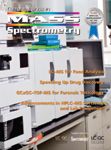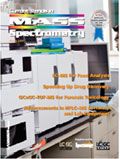Article
Special Issues
Spectroscopy Supplements
TOC
Departments
Departments
Products 33

Cover image courtesy of Agilent Technologies, Santa Clara, California.
Ad Index 34
Articles
Microfluidic Chip-Based Technology as a Growing Trend in LC–MS Analysis 8
Christine Miller and Dayin Lin
A Reproducible Online 2D Reversed Phase–Reversed Phase High–Low pH Method for Qualitative and Quantitative Proteomics 14
Martha Stapels and Keith Fadgen
Recent Trends in the Use of LC–MS-MS for the Testing of Food and Environmental Contaminants 16
André Schreiber and Kristin von Czapiewski
Successfully Identifying Proteins and Their Modifications Using Electron Transfer Dissociation Linear Ion Trap Mass Spectrometry 22
Andreas Huhmer
Nonderivatized Drug-Screen Analysis in Urine with Automated Solid Phase Microextraction and Comprehensive Two-Dimensional GC–TOF-MS 26
John Heim and Scott Pugh
Improving Oligonucleotide Sensitivity and Separation for LC–MS Applications 30
Greg Scott, Matthew Champion, and Michael McGinley

Newsletter
Get essential updates on the latest spectroscopy technologies, regulatory standards, and best practices—subscribe today to Spectroscopy.



